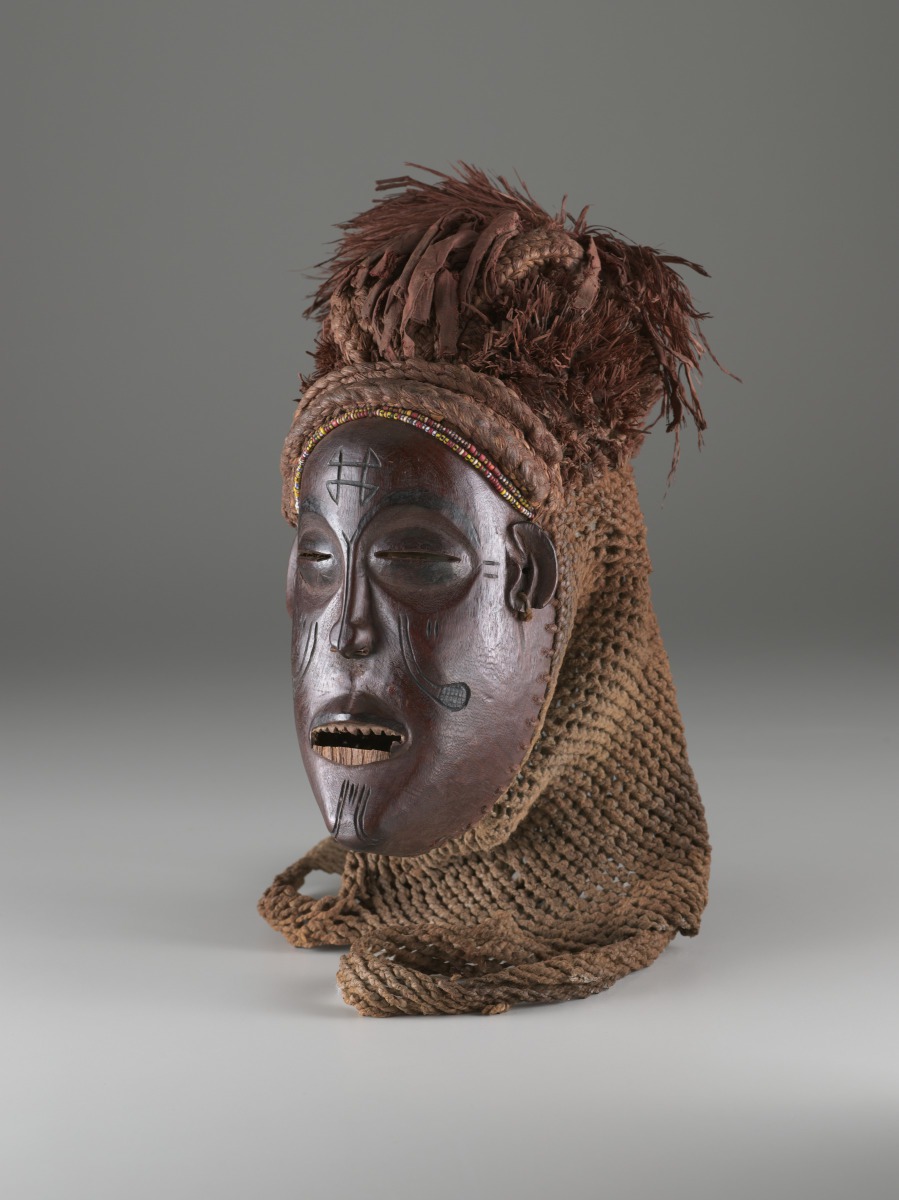
Mwana pwo Mask (Primary Title)
Unknown (Artist)
Chockwe pwo masks represent a female ancestor. These, along with other masks, are associated with initiation camps for boys about eight to twelve years old. In a secluded location outside the village, the boys receive instruction and are circumcised. Pwo and the other masks act as intermediaries between the initiates and the village, especially between the boys and their mothers.
The forehead of this mask is inscribed with the four-pointed dikenga symbol, the Kongo culture’s cosmogram, or sign of the life cycle, on which the layout of this gallery is based. The pervasive use of the dikenga among the Chokwe and neighboring groups in Angola, as well as other cultures in the Congo and Gabon, illustrates the deeply rooted meaning of this eloquent symbol over a wide region.
Some object records are not complete and do not reflect VMFA's full and current knowledge. VMFA makes routine updates as records are reviewed and enhanced.

